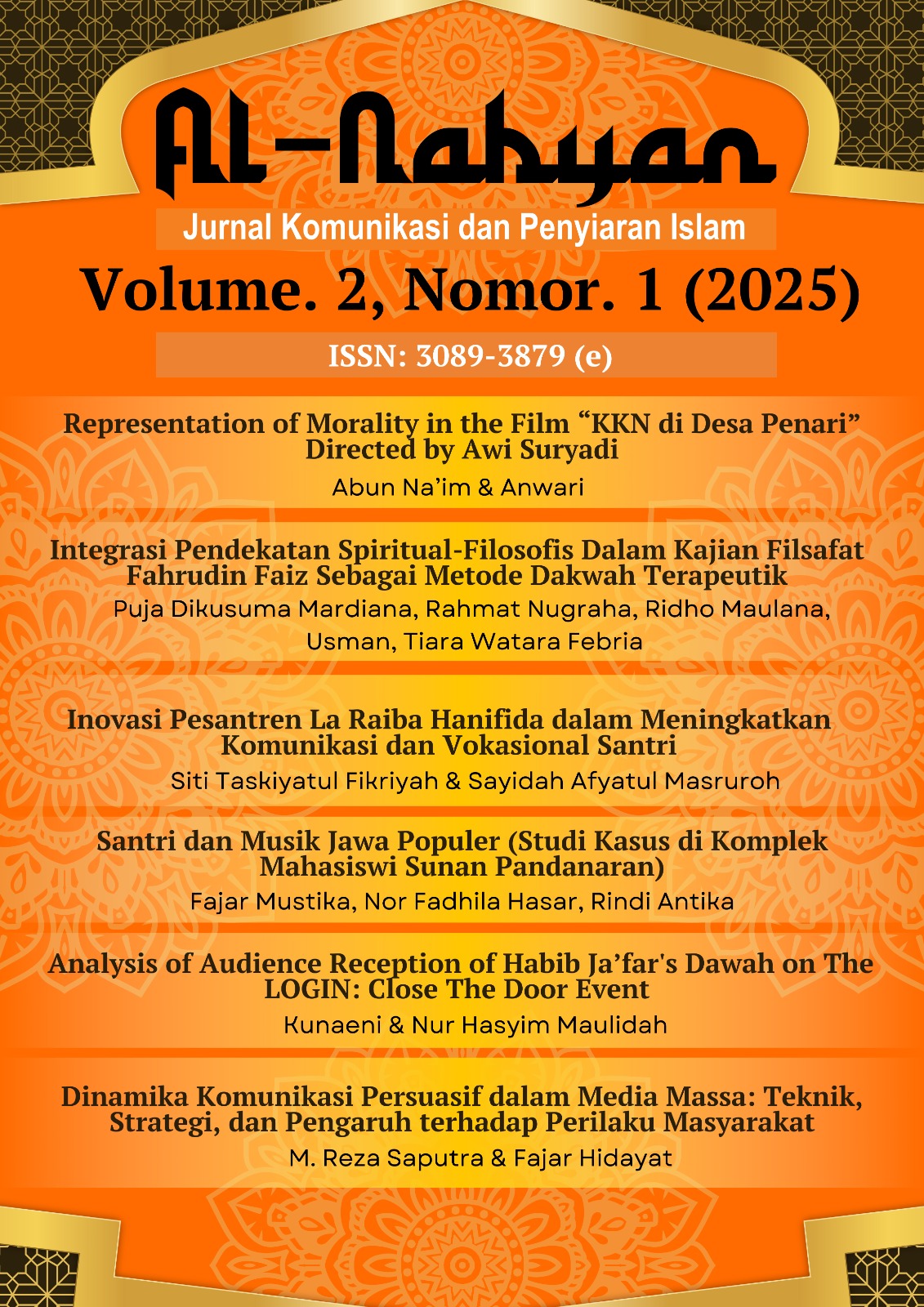Representation of Morality in the KKN Film in the Dance Village Director Awi Suryadi
DOI:
https://doi.org/10.58326/jan.v2i1.193Keywords:
Morality, Semiotics, KKN di Desa PenariAbstract
Film is one of the mass communication media that is often used to reflect the social life of the community. As part of the mass media, film serves as an effective communication tool. For example, the film KKN in Penari Village tells the story of six people who are carrying out KKN in a village that is quite remote. The film highlights moral conflicts, behavioral patterns, values, social and cultural influences, and ethical conflicts. This research aims to answer two main questions: (1) How are the signs of morality depicted in the film "KKN di Desa Penari"? (2) What is the meaning of the signs of morality in the film? This study uses a qualitative interpretive approach by applying a semiotic analysis method based on Ferdinand De Saussure's theory. The results of the analysis show that this film depicts various moral values, including: listening to parental advice, maintaining manners, respecting local customs and culture, helping, asking for God's help, appreciating the gifts of others, and so on. These values reflect ethical and moral principles that are important in social and spiritual life, helping individuals to live according to the values they believe in.











